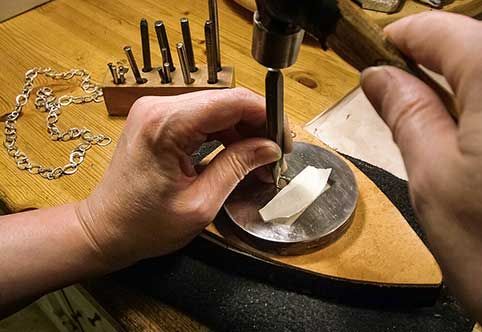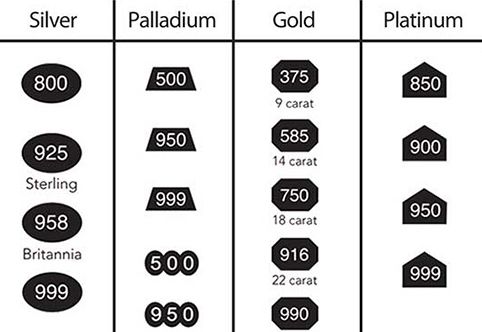Identifying Precious Metal Content From Hallmarks


The Middle Ages seem like a highly regimented time in history, where serfs toiled in fields, guilds controlled work in cities, and the church and the crown controlled it all from above. The truth is, this was a pretty chaotic time in European history, particularly in the larger cities that were the hubs of international trade. Not only was the monetary system highly unstable, resulting in frequent phases of inflation, deflation, and stagnation, there were such huge numbers of coins of different values in circulation, minted by different authorities from different metals, that it was hard to keep track of it all. With almost no laws protecting consumers and regulating trade, you could never be sure what you were getting.
Not knowing what you were getting could have life and death consequences if someone were selling you, say, a cure for an illness that turns out to be poison. It could also have dire financial consequences if someone sells you a piece of jewelry purported to be pure gold that turns out to be a lower-karat alloy or gold-plated, or tries to pass off tin as silver.
The solution to this problem? Hallmarking. A hallmark is basically a certification of authenticity, stamped onto a piece of jewelry, providing certain details about the maker and composition of the piece. It is made up of a sponsor’s mark and a fineness mark, telling you who made the piece and how much of a particular precious metal it contains.
The hallmarking system persists to this day. Just about anything made from a precious metal will have a hallmark. If you’re trying to determine the value of a piece of jewelry, searching for a hallmark is not a bad place to start. Here’s what to look for.
Sterling Silver
Sterling silver will be stamped “925” because it is at least 92.5% silver. Objects bearing this hallmark can legally contain as low as 91.2% silver. If the silver content is any lower, the piece is considered fraudulent.
Platinum
Platinum that contains 95% platinum content or more will be stamped “Platinum” without any other qualifying statement. If the platinum content is between 85% and 95%, it will be stamped “850 Plat” or “950 Pt.” Pieces with a minimum of 500 parts per thousand (50% platinum) and at least 950 parts per thousand platinum group metals in total will be marked with the parts per thousand of pure platinum followed by the parts per thousand of each platinum group metal. For example, a piece that is 60% platinum and 35% iridium will be marked “600 Plat 350 Irid.”
Gold
Gold purity is measured in parts out of 24, with 24 karat gold being pure gold. Gold hallmarks translate karats into a similar percentage. You’ll typically find gold in 22, 18, or 14 karats. That is, 22 parts gold out of 24, 18 out of 24, etc. 22/24 expressed as a percentage is 91.66%, so 22k gold is stamped with a 916. 18k is stamped with a “750,” 14 with “585,” and so on.
In addition to a number, you should also see a symbol, initials, or even the name of the manufacturer. If you’re interested in learning more about these symbols, this website is an invaluable resource for identifying hallmarks from all over the world and throughout history. (Even though it does look like it came out of a time capsule from 2005!)
Not every piece of precious metal will have a hallmark, though. Silver under 7.78g, gold and palladium under 0.5g, and palladium under 1g in weight is not required to be inspected and stamped with a hallmark. While the UK and Europe have strict hallmarking rules, the guidelines are a little more lax in the US. Handmade jewelry from independent designers might not carry a hallmark.
Europe’s hallmarking system was updated in the 1970s, so the symbols you find on antique jewelry will be even more varied and arcane. Even if you don’t know all the details (and they’re typically too small to make out with the naked eye anyway), the very presence of a hallmark should alert you to the fact that you have some amount of precious metal on your hands.

